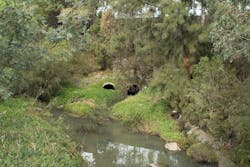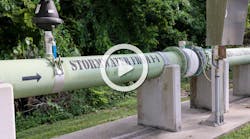EPA Approves Loan for Final Phase of Rhode Island Public Works Project
A decades-long effort to build a $1.5 billion system to treat tainted storm water in east Providence, R.I., is coming to fruition after the U.S. Environmental Protection Agency approved a $269 million low-interest loan Sept. 20.
The Narragansett Bay Commission began the combined sewer overflow project in 2001 with the start of the construction of a $360-million, three-mile long, 36-ft wide tunnel deep under Providence to store runoff. During the second phase, ancillary pipes were constructed to connect to the tunnel for $187 million, according to the Providence Journal. Along with other improvements, the third phase will be the most expensive part of the project, totaling $755 million.
The goal of the project is to build a system of underground tunnels that will store and treat tainted stormwater before it flows into the Narragansett Bay.
These first two phases have been credited with improving the water quality of Narragansett Bay. The third phase, a 2.2 mile-long, 30-ft-wide storage tunnel along the east side of the Seekonk River, is anticipated to continue this improvement, the Providence Journal reported.
The first two phases were completed in 2014, and since then, the commission has been finalizing the final phase. Completing the final phase would bring the system into full compliance with the federal Clean Water Act.
To fund the project, residents in the commission’s service area, a total of 119,000 households, have had their annual bill tripled over the last 14 years. The bill jumped to $480 and is expected to spike to $590 by 2025 before going back down to less than $500 before the end of the construction period. The EPA said that the low-interest loan that it awarded will save payers $100 million when compared to other forms of financing, the Providence Journal reported.
The first two phases of the project are capable of catching about 60% of the storm water that passes through the bay system, and the third phase should be able to handle the rest, according to the Providence Journal.
Since the system has been in place, its caught 11 billion gal of untreated storm water and bacteria levels have decreased by 50%. According to the Providence Journal, the University of Rhode Island has found that levels of nutrients dropped to half of what they were in the 1990s.
Work on the third phase is planned to begin in 2020.
Read more about storm water systems and combined sewer overflow.


